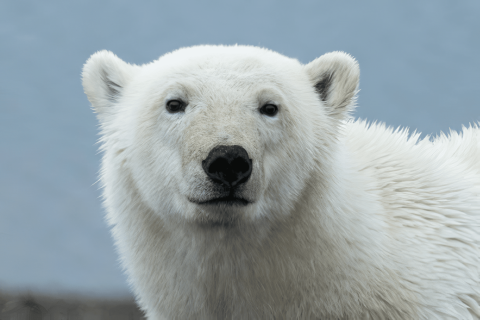
Candidate of Biological Sciences, Leading Researcher of A.N. Severtsov IEE RAS Ilya Mordvintsev talked about the current state of research and plans for the future.
This year, work on the study of the polar bear and the Atlantic walrus, which began in 2020–2021 with the support of Rosneft, was completed.
“Field work has been going on for two years on Franz Josef Land and Novaya Zemlya, and this year we had a year of office processing. We received data on the movement of polar bears that we tagged, observed their individual and annual habitats. We still have two females transmitting signals - it looks like they have settled in dens,” said the scientist.
The specialists also managed to obtain data on toxicology, pollution of polar bears with various heavy metals and persistent organic pollutants. All values are within the normal range and do not cause any harm to the health of animals, Ilya Mordvintsev noted. By all indications, the bears are in good condition.
“As for diseases, except for trichinosis, we did not find anything serious. But this is a disease that affects most adult bears throughout the Arctic, not just in the Russian sector,” he said.
As the specialist admitted, not all planned trips were carried out, but one expedition turned out to be very interesting.
“In October of this year, we worked for the first time on the Bear Islands, an archipelago in the East Siberian Sea. Quite an interesting place, which is very little explored. In the spring, employees of the Medvezhiy Islands Reserve recorded a large number of birth lairs. This is a new place that can be called another maternity home for polar bears in our Arctic,” said Mordvintsev.
In the course of aerial monitoring work, scientists were interested in the condition and number of bears that remained on these islands during the ice-free period.
“We worked in October, which is the month without ice covering. We counted more than 60 individuals - both single bears, and females with one-year-old cubs and with two-year-old and underyearlings. And they are all in such good condition, well-fed,” said the expert.
Therefore, next year, joint work will continue on this territory with the Medvezhiy Islands State Nature Reserve, the Lena Pillars National Park and the Institute for Biological Problems of the Permafrost of the Siberian Branch of the Russian Academy of Sciences.
“Next year we plan to visit the same islands, but already during the period when the females leave the birth dens, we will see exactly the number, the location of the dens, the number of cubs in broods, and what condition the females are in. This is a very interesting work that needs to be done annually,” concluded Ilya Mordvintsev.
Related materials:
Arctic Universe: "В ИПЭЭ РАН подведены итоги работы по изучению белых медведей"
